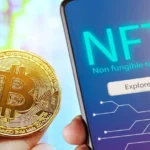About
Wrapped Ether (WETH) is a tokenized version of the original Ether, the native cryptocurrency of the Ethereum blockchain.
WETH is pegged to the value of Ether and is used to facilitate direct trade with ERC-20 standard tokens.
As the original Ether was created prior to the ERC-20 standard, it does not comply with the ERC-20 standard tokens, and thus cannot be traded directly on ERC-20 compliant DeFi applications or decentralized autonomous organizations (DAOs), unlike the interoperable ERC-20 tokens themselves.

State of the Project






















































































The Website and Whitepaper










Development Stage










































Team



















































Community

























Key Metrics
Max supply: Differs according to the data provider checked: 7,900,729 WETH according to CoinGecko, or 1,153,917 on CoinMarketCap.
Circulating supply: No data provided.
Market Cap: No data provided.
All-time high (ATH): $4,863.70 (November 2021)
Markets

















Wallets

















Asset allocation:





































Verdict
- Wrapped tokens enhance interoperability, as they enable the creation of more bridges between different blockchains, thereby improving the flow of digital assets. This in turn leads to higher liquidity on decentralized exchanges.
- Transactions conducted in wrapped Ether are faster and cost less. It also enabled investors to their Ethereum coins in the DeFi space.
- Alternative Ethereum token standards, like ERC-223, could pose an existential risk to the usage of wrapped Ether. Developers are already working through the improved ERC-223 token standard, which should allow the transferal of tokens to be made in the same way as ETH transactions.
- WETH still does not have a single defined standard. It also relies considerably on the custodian issuing and burning the WETH tokens, be it a smart contract or a multi-signature wallet. This means there is a high risk of losing holdings were something to happen to that relatively centralized smart contract, or were the user to redeem their assets on a non-native blockchain.










